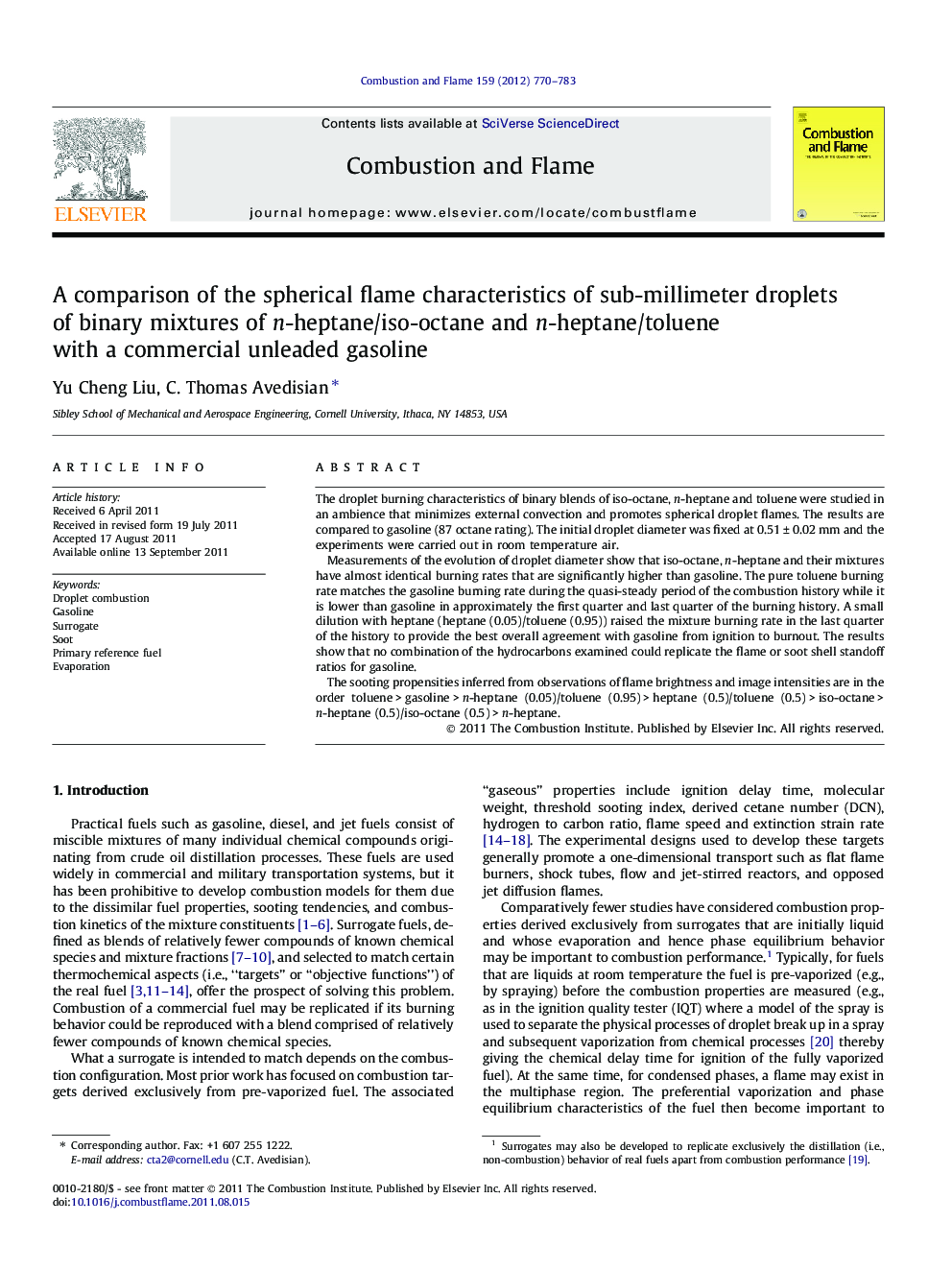| Article ID | Journal | Published Year | Pages | File Type |
|---|---|---|---|---|
| 167278 | Combustion and Flame | 2012 | 14 Pages |
The droplet burning characteristics of binary blends of iso-octane, n-heptane and toluene were studied in an ambience that minimizes external convection and promotes spherical droplet flames. The results are compared to gasoline (87 octane rating). The initial droplet diameter was fixed at 0.51 ± 0.02 mm and the experiments were carried out in room temperature air.Measurements of the evolution of droplet diameter show that iso-octane, n-heptane and their mixtures have almost identical burning rates that are significantly higher than gasoline. The pure toluene burning rate matches the gasoline burning rate during the quasi-steady period of the combustion history while it is lower than gasoline in approximately the first quarter and last quarter of the burning history. A small dilution with heptane (heptane (0.05)/toluene (0.95)) raised the mixture burning rate in the last quarter of the history to provide the best overall agreement with gasoline from ignition to burnout. The results show that no combination of the hydrocarbons examined could replicate the flame or soot shell standoff ratios for gasoline.The sooting propensities inferred from observations of flame brightness and image intensities are in the order toluene > gasoline > n-heptane (0.05)/toluene (0.95) > heptane (0.5)/toluene (0.5) > iso-octane > n-heptane (0.5)/iso-octane (0.5) > n-heptane.
